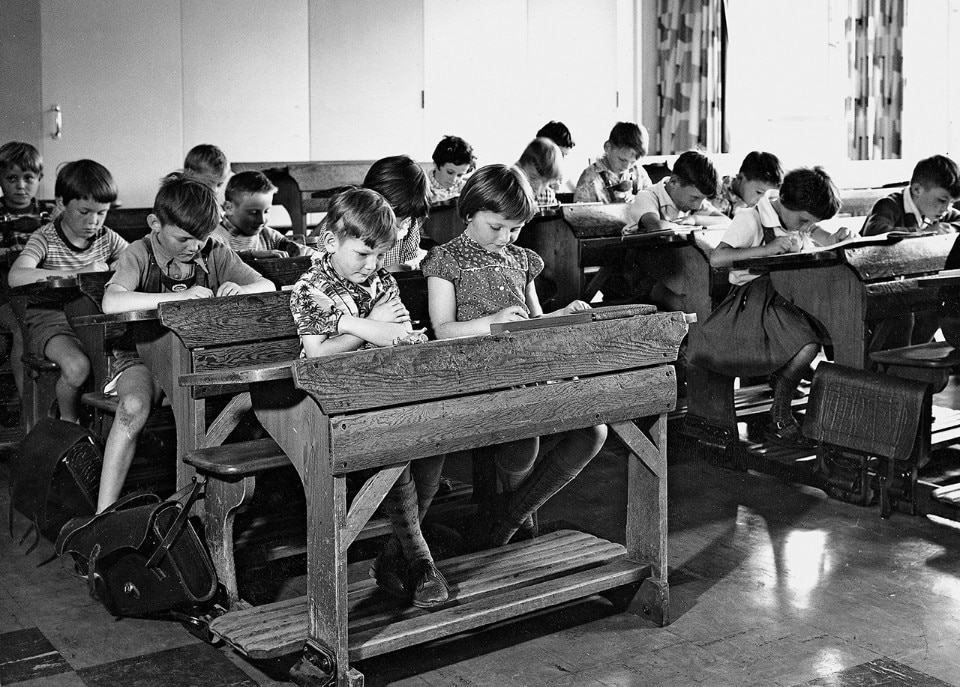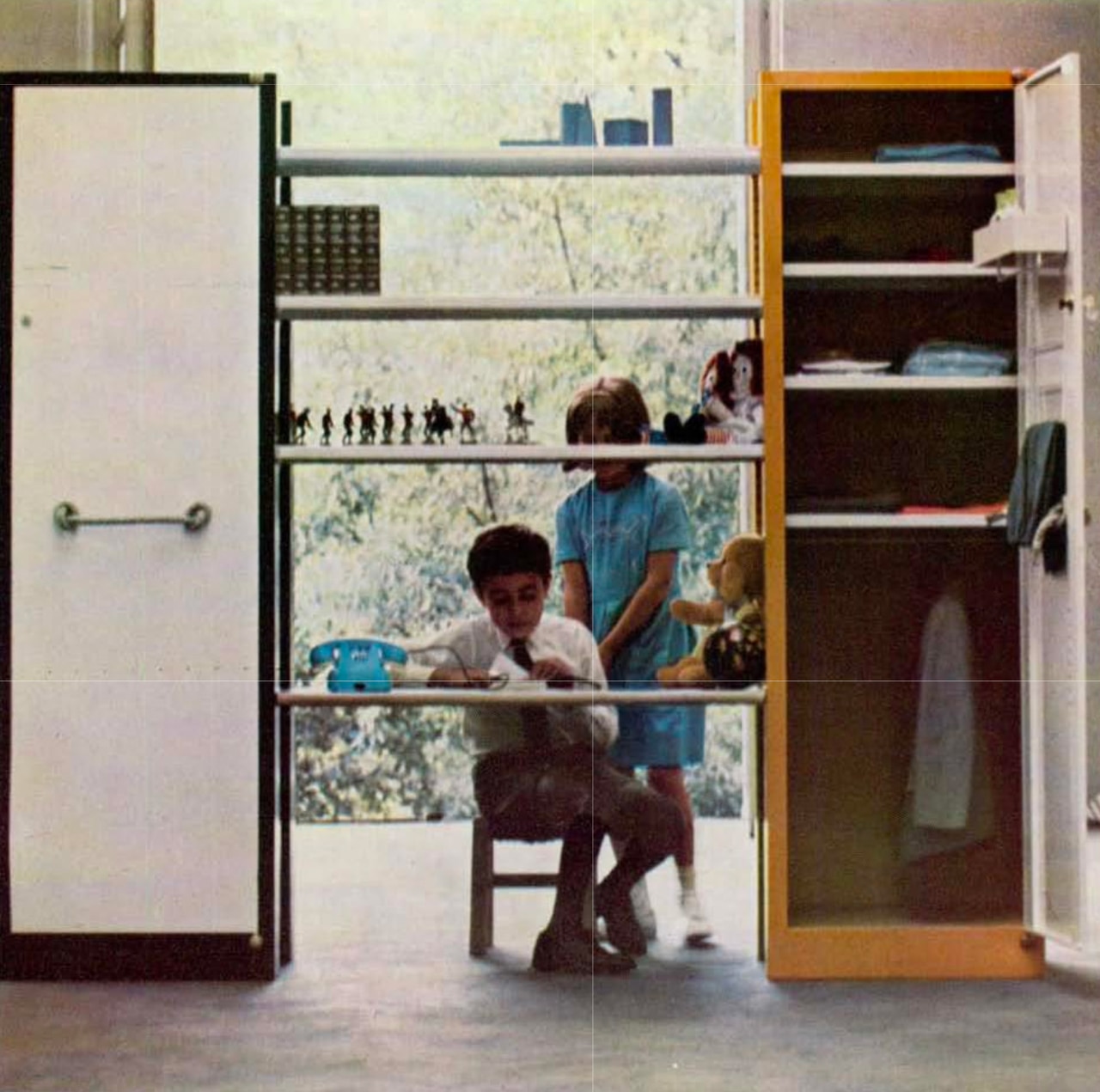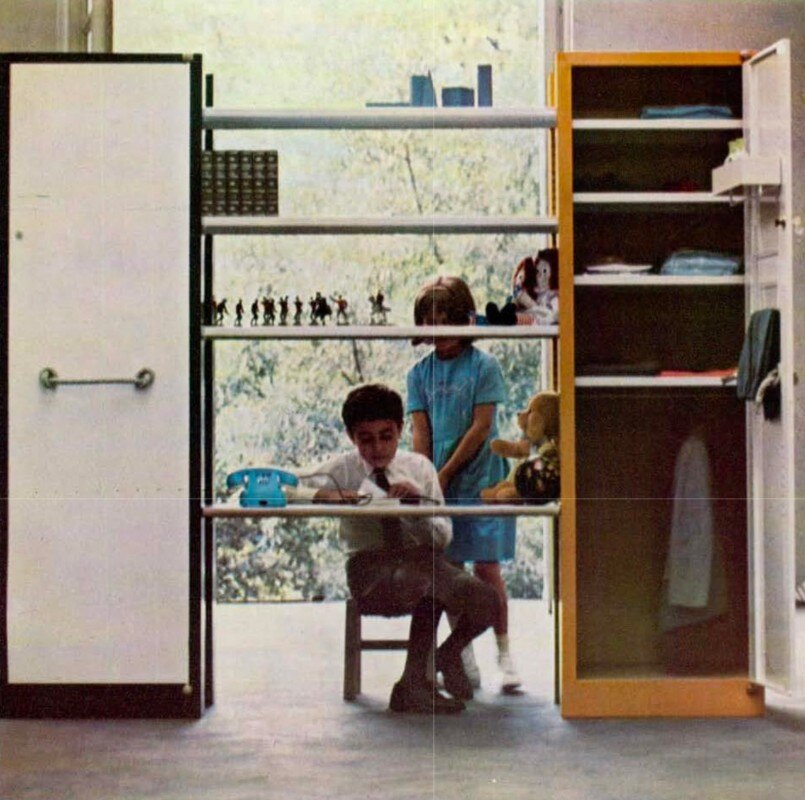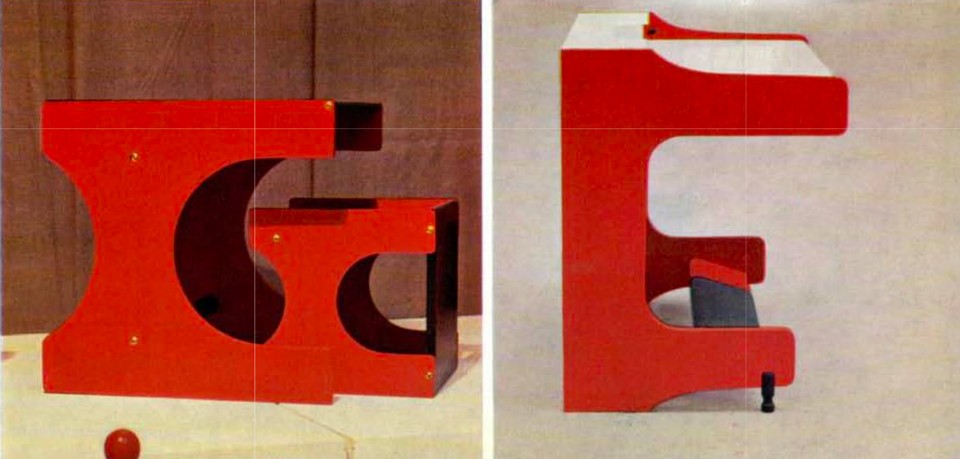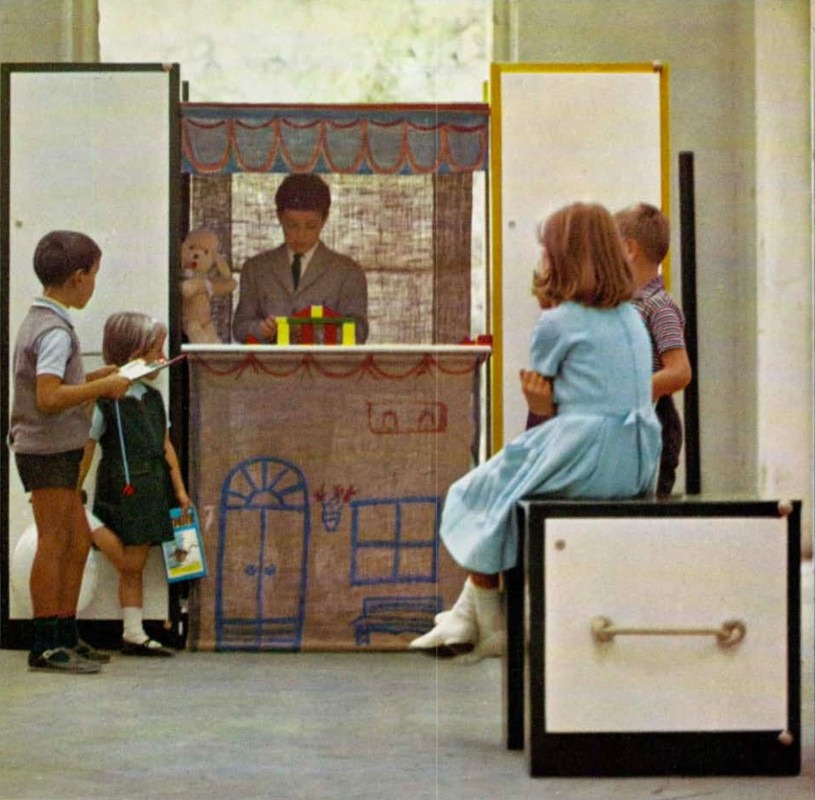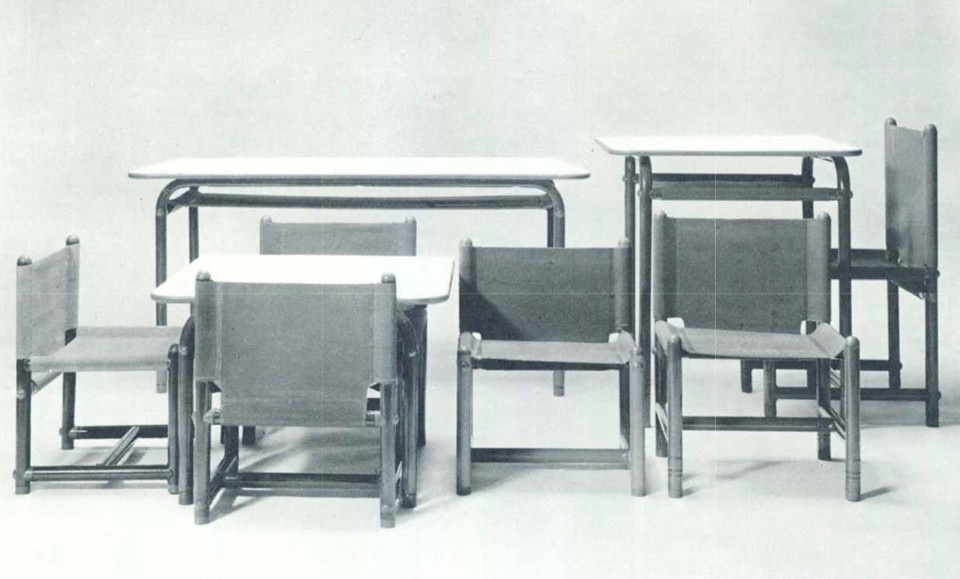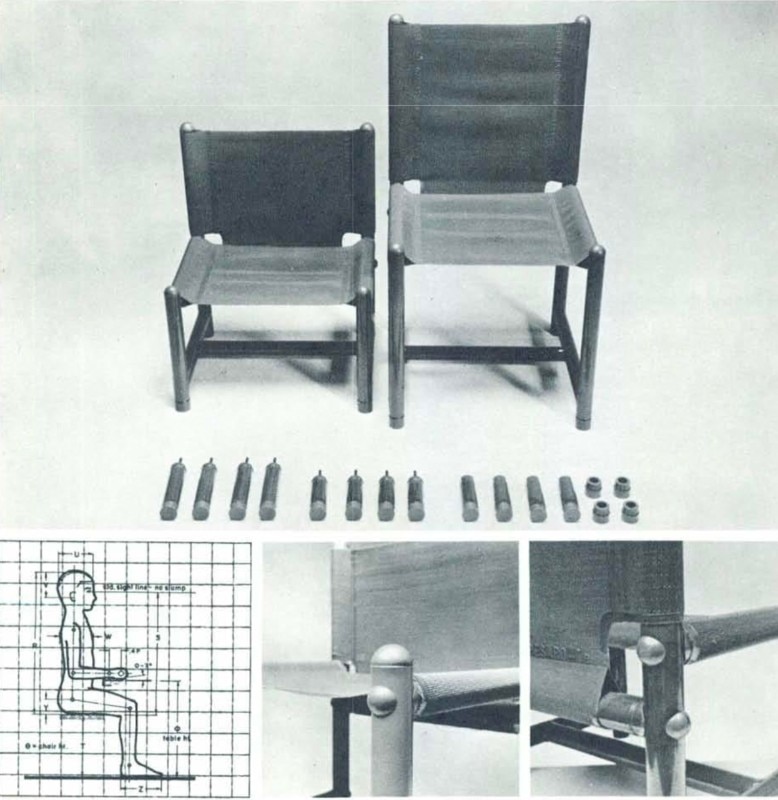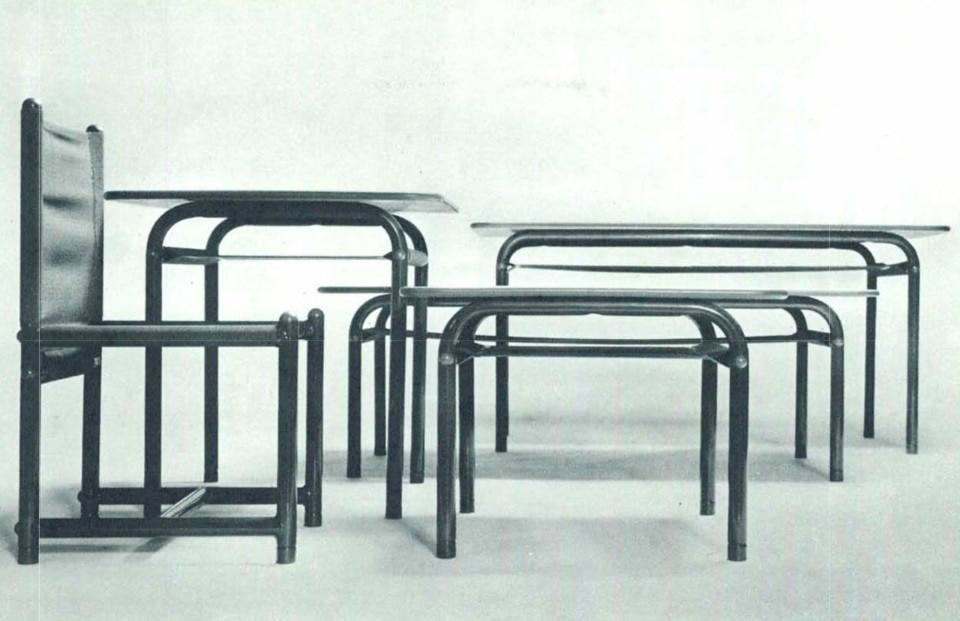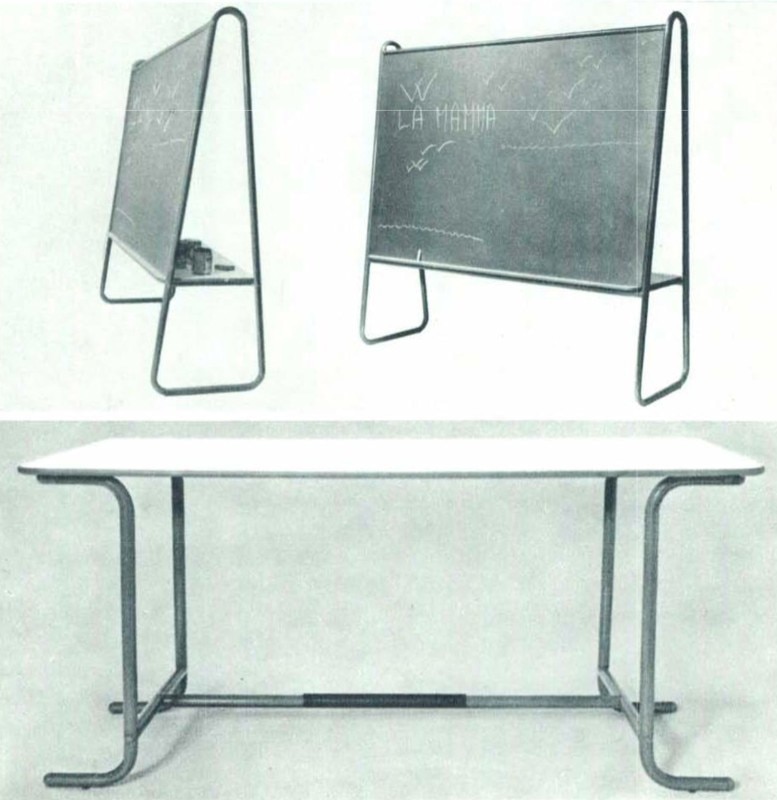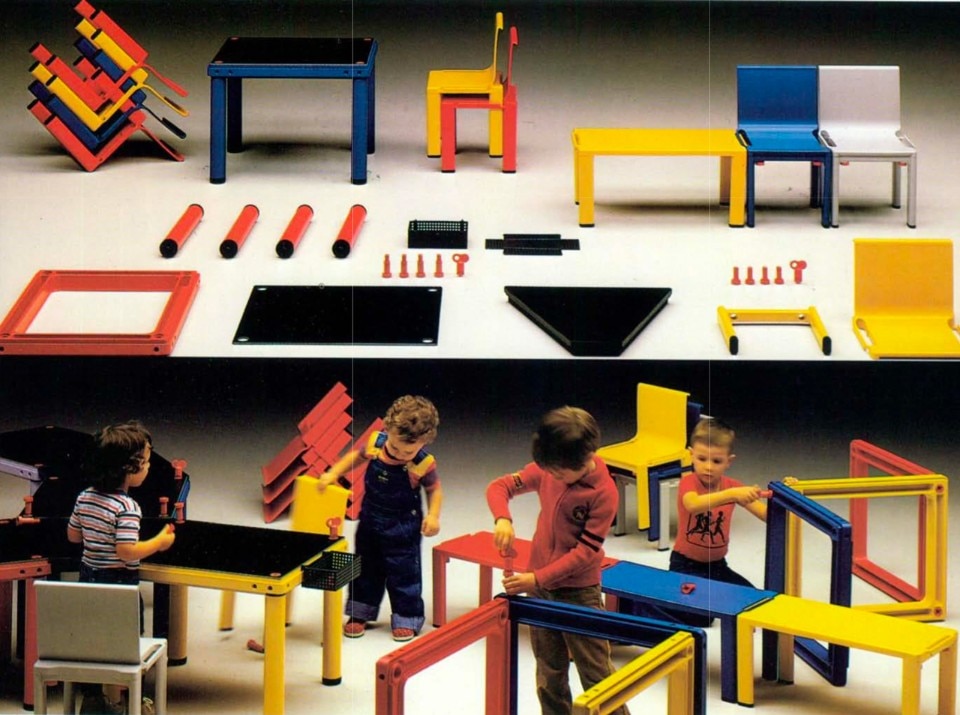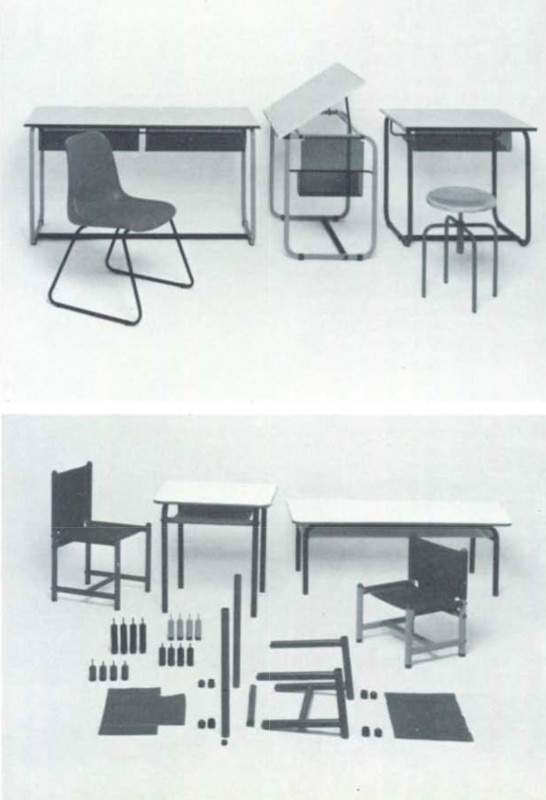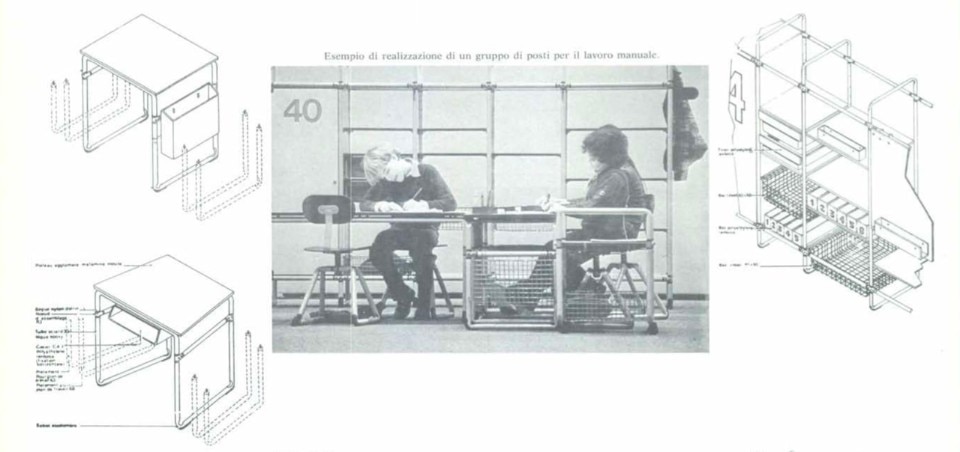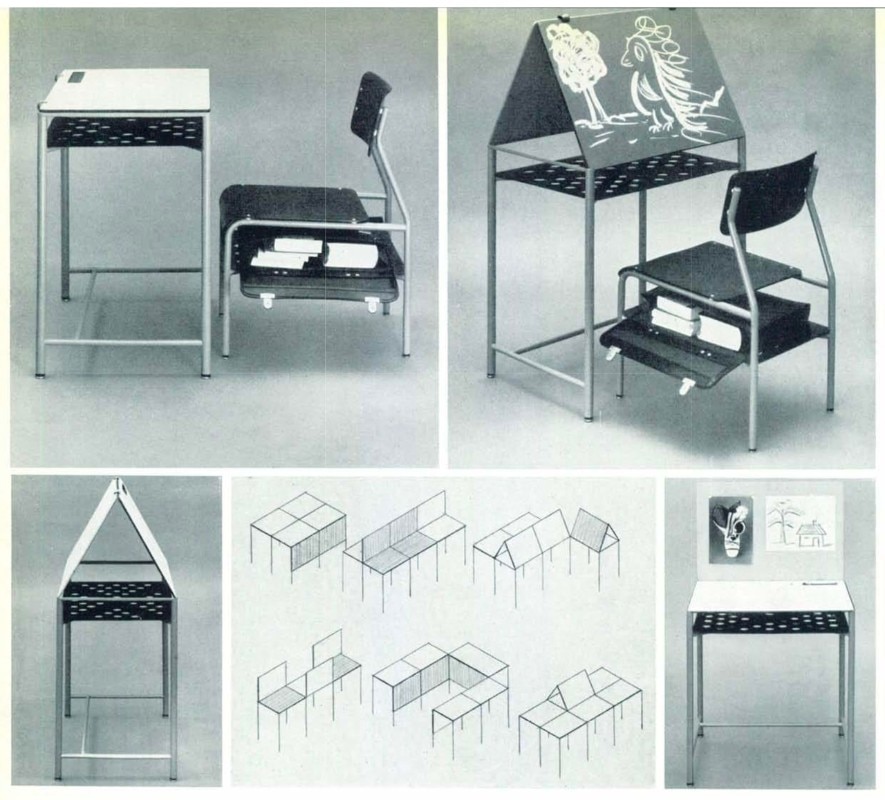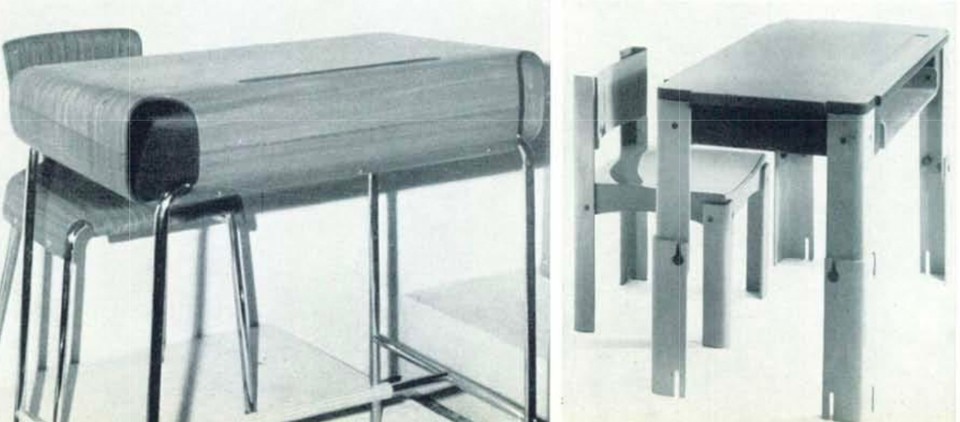In the short summer of 1914, as well as the architecture and consumer goods selected “to raise the standard of craft culture”, visitors to the Deutscher Werkbund Exhibition in Cologne could admire innovative proposals for work and living conditions. The new ideas encountered by the wider public included a “Montessori room”, made by Berlin furniture manufacturer P. Johannes Müller, also a member of the Werkbund. Germany had already seen furnishing proposals custom-designed for infant schools, such as those inspired by Friedrich Fröbel’s theories, but the Montessori proposals were received with fast-growing interest and, indeed, the first Montessori school opened in Berlin in 1919.
In those same years, Maria Montessori was focusing on a key issue of her educational thinking, formulated completely in the book Spontaneous Activity in Education (1916): whether more advanced surroundings and materials could advance the educational approach that had already been a success with small children. “Certain special requirements must be recognised in the rooms of a free school: psychical hygiene must play its part here as physical hygiene has already done... the ‘psychical’ classroom should be twice as large as the ‘physical’ classroom... In our schools, we recommend the use of ‘light’ furniture which is correspondingly simple and economical in the extreme. If it be washable, so much the better, especially as the children will then ‘learn to wash it’... But what is above all essential is that it should be ‘artistically beautiful’. In this case beauty is not produced by superfluity or luxury, but by grace and harmony of line and colour, combined with that absolute simplicity necessitated by the lightness of the furniture... ‘types of furniture’ might arise which would in themselves do much to elevate the taste and refine the habits... we should witness the humanisation of art, rising amid the ugliness and darkness of those who have accustomed themselves to thinking only of death... Schools seem veritable tombs with their desks arranged in rows like black catafalques; black merely because they have to be of the same colour as ink to hide the stains.”
The words of the educator – a doctor and anthropologist by training – were already cast onto a very international stage. Montessori clearly established a concept later shared by the cutting edge of 20th-century design culture and that can be summed up today in the question: how can design, in its broadest sense, positively change teaching and learning?
Some answers to this question may be found on a visit to Tauberbischofsheim, not far from Würzburg, in Germany. Since 1924, it has been the home of VS, a manufacturer of school and office furnishings, successor of the old P.J. Müller in Berlin. Here, in an old industrial shed beside the factory and showroom designed about ten years ago by Günter Behnisch, visitors encounter an impressive collection of school furnishings dating from the late 19th century to the present day. Driven by an interest that very quickly exceeded professional needs, Thomas Müller (the creator and tireless feeder of the collection) has over the years and with the precious assistance of Romana Schneider painstakingly contextualised the pieces within the broader issue of designing educational spaces. [...] The examples displayed are from all over Europe, the United States and Brazil, but the main focus is, of course, on Germany, a country that from the very first staked its money on education, making it one of the strong points of its success.
Several examples of multiple desks are a reminder that the school originally borrowed from other institutions, such as the church, in terms of both the desk type (see church pews) and the linear arrangement before a podium from which teachers “conveyed concepts, principles and interpretations of reality drawn from irrefutable texts.” (A. Laurìa, Progettare i luoghi dell’educazione, in Costruire in laterizio, n. 86, 2002) The height and position of the podium and the desk arrangement reflected various pedagogical concepts, telling us much about the balance of power in schools. The keen analyses of Michel Foucault spring to mind, when he pointed out that the functional schemes of the early school classrooms, serving to train the future working class, relied on military discipline. “The organisation of serial space,” he wrote in Discipline and Punish. The Birth of the Prison, “was one of the great technical changes in elementary teaching... By assigning individual places, it became possible to control the individual and the simultaneous work of all; a new economy of learning times was organised; school space was made to function like a learning machine but also one that supervised, ranked and rewarded.”
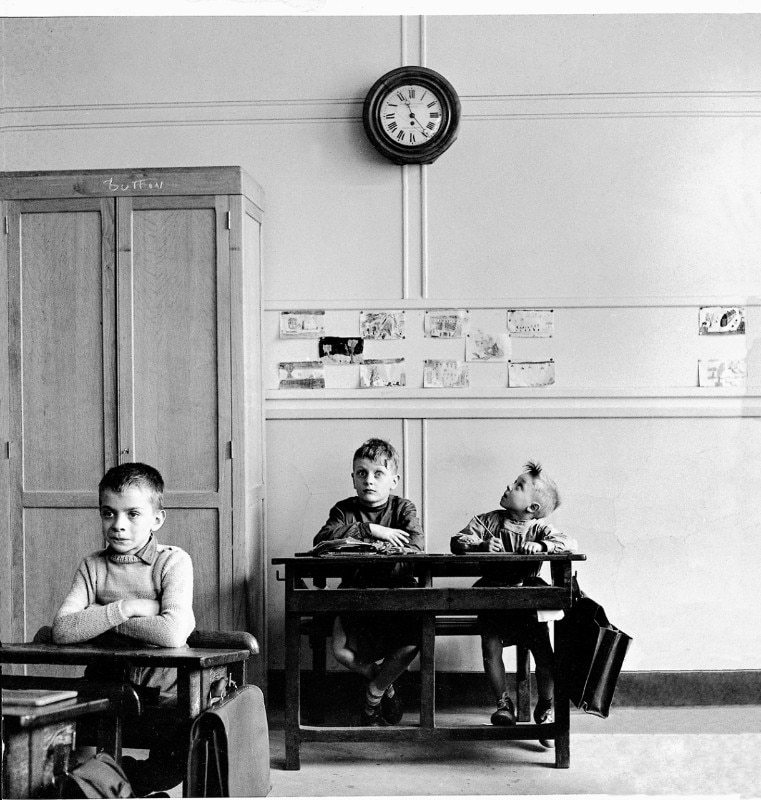
The results of the first ergonomic studies tallied in full with the desks developed by Wilhelm Rettig, chief architect of the Munich City Council, in 1890. Given mobile seating, they were an early example of correct design to counter malformations of the spine, the focus of medical considerations of the times; the easy side lifting, achieved without spilling any ink, brought better hygiene. These features made them an unprecedented success, with production in the millions until the 1950s. […] A major surge of innovation in the 1920s and 1930s saw the school as a crucial component in social reform and its furnishings and envelope were included in the programme to build a new man. The ranks were broken, teachers descended from the podium and the desk gave way to a desk+seat combination, more flexible and easily moved or taken outside. Examples include the versatile tubular metal pieces, clearly influenced by the Bauhaus theories, designed by Wilhelm Schütte for the schools in Frankfurt and Gropius’s more formalistic research for Isokon.
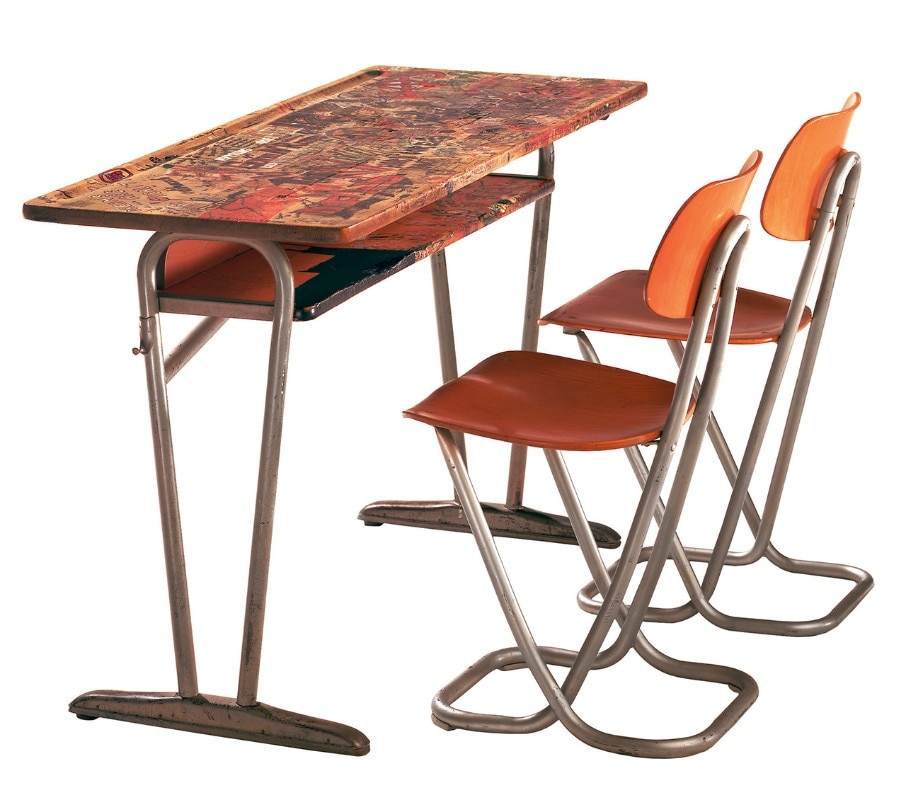
In more recent times, the Ulm School experience provided a “model” piece that condensed a different but very up-to-the-minute educational theory. Elementary in its construction and with a minimalist aesthetic, the versatile stool developed by Max Bill and Hans Gugelot in 1953 could serve as a chair, a shelf, a book-rest, a podium or a side table. All the students were given one and were personally responsible for it as it accompanied them throughout the day. What is more, they also had to learn to make one. This was a piece of (scholastic) furnishing with a strong educational as well as aesthetic energy.
Today, in the face of the critical, if not worse, situation in which the school finds itself (the Italian one first and foremost), as well as financial resources, it is more necessary than ever to find ways to (re-)shape a physical environment that will encourage learning, stimulate creativity, motivate and bring a sense of well-being. This is the challenge that Maria Montessori recognised 100 years ago.


